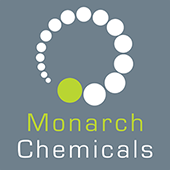Explosives Precursors and Poisons (EPP) License:
- The first and most critical aspect of these new regulations is the requirement for private individuals who wish to import, acquire, possess, or use certain chemicals to hold an Explosives Precursors and Poisons (EPP) license issued by the Home Office.
- Additionally, an associated photographic identity document is necessary for individuals seeking these licenses.
- As Monarch Chemicals does not trade with the general public or private individuals this will not affect our customers. As it has always been, any suspicious enquiries or transactions will be reported.
Supply Chain Notification and Training:
- Businesses supplying regulated and reportable substances to other businesses must inform them that these products fall under the Poisons Act 1972.
- Various methods, such as notification flags, email notifications, or notices on shipping information, can be employed to achieve this.
- Online marketplaces are also obligated to inform their suppliers of their responsibilities under the Poisons Act.
Changes to how Monarch Chemicals will operate:
From 1st October 2023 all businesses supplying regulated explosive precursors (Annex II) to businesses and professionals must take additional steps to verify legitimacy and obtain. In regards to any customers we currently supply, or make enquiries will need to supply:
- The business name/address and name of individual authorised on behalf of business to make purchase.
- A form of photographic evidence of the authorised individual within the purchasing company. (Passport, driving licence, business ID card…)
- A statement relating to customer's trade, profession, or business and end-use.
- The customer's VAT number (if held).
These changes apply to the following product:
Regulated substances and concentration thresholds
Explosives precursors
- ammonium nitrate: 16% N
- hexamine
- hydrochloric acid: 10% w/w
- hydrogen peroxide:12% w/w
- nitromethane: 30% w/w
- nitric acid: 3% w/w
- phosphoric acid: 30% w/w
- potassium chlorate: 40% w/w
- potassium perchlorate: 40% w/w
- sodium chlorate: 40% w/w
- sodium perchlorate: 40% w/w
- sulfuric acid: 15% w/w
Poisons
- aluminium phosphide
- aluminium sulfide
- sodium sulfide
- calcium sulfide
- magnesium sulfide
- arsenic compounds
- barium salts (other than barium sulphate, barium carbonate and barium silicofluoride)
- bromomethane
- chloropicrin
- fluoroacetic acid, its salts and fluoroacetamide
- hydrogen cyanide and metal cyanides (other than ferrocyanides and ferricyanides)
- lead acetates and compounds of lead with acids from fixed oils
- magnesium phosphide
- mercury compounds
- oxalic acid: 10% w/w
- phenols (phenol; phenolic isomers of the following: cresols, xylenols, monoethylphenols); compounds of phenols with a metal, 60% w/w of phenols or, for compounds of phenols with a metal, the equivalent of 60% w/w of phenols
- phosphorus yellow
- strychnine and its salts and its quaternary compounds
- thallium and its salts
- zinc phosphide
- calcium phosphide
- 2,4- dinitrophenol and compounds including sodium dinitrophenolate
Reportable substances
Explosive precursors
- acetone
- aluminium powders
- calcium nitrate
- calcium ammonium nitrate
- magnesium nitrate hexahydrate
- magnesium powders
- potassium nitrate
- sodium nitrate
- sulfur
Poisons
- aldicarb
- alpha-chloralose
- ammonia 10% w/w
- barium, salts of, the following: barium carbonate; barium silicofluoride
- carbofuran
- cycloheximide
- dinitrocresols (DNOC) their compounds with a metal or a base
- dinoseb its compounds with a metal or a base
- dinoterb
- drazoxolon; its salts
- endosulfan
- endothal its salts
- endrin
- fentin compounds of
- formaldehyde 5% w/w
- formic acid 25% w/w
- hydrofluoric acid alkali metal bifluorides; ammonium bifluoride alkali metal fluorides; ammonium fluoride sodium silicofluoride
- metallic oxalates
- metal phosphides
- metal sulfides and polysulfides
- methomyl
- nicotine its salts; its quaternary compounds
- nitrobenzene 0.1% w/w
- oxamyl
- paraquat salts of
- phenols (as defined in part 2 of this schedule) in substances containing no more than 60%, weight in weight, of phenols; compounds of phenols with a metal in substances containing no more than the equivalent of 60%, weight in weight, of phenols
- phosphorus compounds, the following: azinphos-methyl, chlorfenvinphos, demephion, demeton-S-methyl, demeton-S-methyl sulphone, dialifos, dichlorvos, dioxathion, disulfoton, fonofos, mecarbam, mephosfolan, methidathion, mevinphos, omethoate, oxydemeton-methyl, parathion, phenkapton, phorate, phosphamidon, pirimiphos-ethyl, quinalphos, thiometon, thionazin, triazophos, vamidothion
- potassium hydroxide 17% of total caustic alkalinity
- sodium hydroxide 12% of total caustic alkalinity
- sodium nitrite
- sodium hypochlorite solutions, above 6% available chlorine
- thiofanox
Products of particular interest are those in which a reportable chemical is either: present on its own or the main ingredient, or present in a simple mixture, typically less than 5 ingredients.
Products containing less than 1% of any of the reportable chemicals, or fertilizers that are not labelled for nitrogen (N) content are, in general, of no concern.
These new regulations, effective from October 1, 2023, introduce important changes for the sale of chemicals used as explosives precursors. As a chemical distributor, it's crucial we follow these guidelines to ensure compliance and maintain the safety and security of yours and our business operations.
For more detailed information and guidance, please refer to the official documentation provided by the Home Office https://www.gov.uk/government/publications/supplying-explosives-precursors/supplying-explosives-precursors-and-poison



